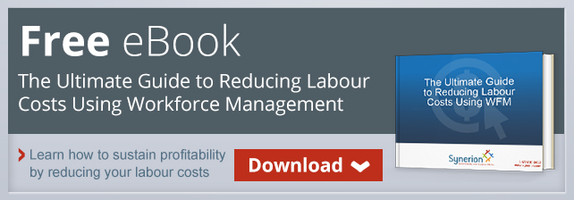
In all types of industry, labour is typically the highest expense of organizations. Consequently, many organizations struggle with how to control labour costs effectively and without terminating employees. In the manufacturing sector in particular, this is a prominent concern, as overhead costs often run higher than in service-based industries. The key to achieving reasonable worker cost control is to focus on improving employee efficiency. To this end, we have compiled a list of tips that will help manufacturers boost workforce productivity.
_________________________________________________________________________
1) Invest in equipment and machinery where necessary
A study conducted by the Government of Quebec found that there is a direct correlation between the level of employee efficiency and the physical capital stock used by workers to perform their productive activities. In other words, organizations that invest more efficiently in necessary equipment exhibit higher worker productivity than those who do not. Thus, the higher the capital stock in machinery and equipment per worker, the higher the worker output your business will experience.
_________________________________________________________________________
2) Be cognizant of morale
The basest definition of labour productivity is the amount of output produced by an employee during their time in the workplace, typically measured against established benchmarks and/or the output of colleagues. It is common knowledge that job satisfaction and performance are interrelated, with higher morale resulting in better performance. As such, any issues with morale will adversely affect workforce yield. This is a proven causal relationship that can be mitigated by identifying and resolving any morale issues. Workforce management solutions allow you to discover trends – decreasing outputs, habitual lateness, unexplained absences – that may point to employee dissatisfaction.
_________________________________________________________________________
3) Be realistic
In the manufacturing sector, production pressures, client expectations, and stringent deadlines can contribute to unrealistic goals being set. When workload benchmarks are fundamentally unattainable, not only are employees dissatisfied, but your business can never expect to reach its labour productivity goals. If you want to boost worker efficiency, it is essential to set clearly defined, realistic objectives that ensure both timeliness and high quality output.
_________________________________________________________________________
4) Give recognition where it’s due
Regular feedback is a very important element of professional development, and it also serves to improve labour yield. When employees are recognized for good work, it acts as a motivator and lets employees know that they are integral in the continuing success of a business. This recognition doesn’t need to be in monetary form either; even an email acknowledging performance can go a long way.
_________________________________________________________________________
Ultimately, improving staff productivity as a manufacturer requires some degree of change. Whether through more effective workforce management practices, prudent equipment and machinery investment, or the improvement of relations between management and employees, focusing on the above tips will help lay the foundation for a more productive workforce.
